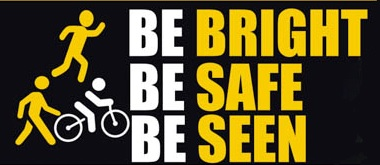Using helmets and protective equipment while cycling is crucial for preventing accidents, as they help reduce injuries and instill a sense of safety consciousness among riders.
Understanding the legal and safety implications of not wearing appropriate gear is crucial for cyclists in St. Louis, Missouri, especially when navigating the aftermath of an accident in places like St. Louis. Consulting an experienced St. Louis bicycle accident lawyer can provide essential guidance on how protective gear can impact accident claims and compensation.
In Missouri, where distracted driving caused 87 fatal crashes in 2021, including accidents involving bicyclists, the importance of wearing helmets and protective gear cannot be overstated. These safety measures are vital in reducing the severity of injuries in the event of an accident, potentially saving lives and mitigating long-term consequences.
Let’s take a look at the significance of bicycle helmets and protective gear in accident prevention.
Safeguarding the Head: The Importance of Helmets
Cyclists often consider the head a delicate area when riding a bike since it’s prone to injury during accidents. Helmets are specially designed to absorb shocks and safeguard the head and brain in case of a crash. Research has proven that wearing a helmet significantly lowers the risk of head injuries. These safety gears not only absorb impacts but also evenly distribute the force across the head to reduce the chances of traumatic brain damage. Bike helmets come in a variety of styles and materials to suit cycling activities, ensuring safety and comfort.
Guarding the Body: Extra Safety Equipment
Helmets are important for cyclists’ safety. At the same time, other protective gear, like elbow and knee pads, also serves a role by safeguarding joints from injuries such as scrapes and bruises. Gloves provide grip and protect hands from abrasions and blisters. Reflective clothing and lights increase visibility, making cyclists easily seen by drivers, especially in dim lighting. These safety components work together to lower the risk of injuries in case of accidents.
Advantages That Go Beyond Keeping You Safe
Wearing bicycle helmets and protective gear offers more than protection—it also boosts riders’ sense of security and confidence. The gear not only promotes safety but also encourages more individuals to embrace cycling as a regular pursuit. This heightened assurance can result in safe rides and contribute to a healthier way of living. Additionally, using safety equipment can inspire others—especially young cyclists—to prioritize safety in their riding practices.
Uncovering False Beliefs and Misunderstandings
There are still misunderstandings surrounding bicycle helmets and protective gear despite their advantages being highlighted in discussions held by people. The idea that helmets are heavy and uncomfortable is a misconception among individuals; however, modern helmets are manufactured with materials and ventilation systems to ensure comfort even during extended rides. Another false belief is that seasoned cyclists do not require any gear as they possess skills in riding bicycles. However, it is important to note that accidents can occur regardless of one’s experience level. Therefore, it is advisable for all cyclists—both beginners and experienced riders—to wear gear as a precautionary measure against potential mishaps.
Encouraging a Safe Environment
Creating a safe environment relies on everyone pitching in—from groups and businesses to each person in the community. Promoting the use of helmets and safety gear should be part of community events such as school and cycling group activities. By spreading the word about safety gear through initiatives, we can make people more conscious of its significance and encourage a positive shift in how they view it. Moreover, making protective gear readily available and budget-friendly can help overcome obstacles that might hinder individuals from embracing these safety precautions.
Selecting the Appropriate Equipment

Choosing the right gear for cycling requires taking into account different aspects, like the type of cycling you do and your personal preferences, as well as specific safety requirements to consider. Helmets need to be snug and compliant with safety regulations established by the proper authorities. Elbow and knee pads should provide ample protection while still allowing for freedom of movement. Reflective gear and lights ought to be luminous and easily seen from afar. Spending time selecting the appropriate gear guarantees optimal safety and comfort, which enhances the overall enjoyment of cycling.
End Note
Using helmets and protective equipment while cycling is crucial for preventing accidents, as they help reduce injuries and instill a sense of safety consciousness among riders. Acknowledging the significance of these safety measures is essential to promoting responsible biking habits and enhancing the well-being of the community. Choosing to prioritize safety gear allows cyclists to relish the advantages of biking while reducing the risks associated with it.


Join the conversation!